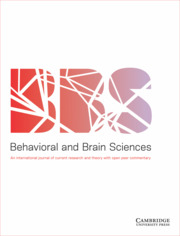Crossref Citations
This article has been cited by the following publications. This list is generated based on data provided by Crossref.
Mills, Gregory
and
Redeker, Gisela
2023.
Self‐Repair Increases Referential Coordination.
Cognitive Science,
Vol. 47,
Issue. 8,
Olza, Inés
2024.
Gestural Alignment in Spoken Simultaneous Interpreting: A Mixed-Methods Approach.
Languages,
Vol. 9,
Issue. 4,
p.
151.

